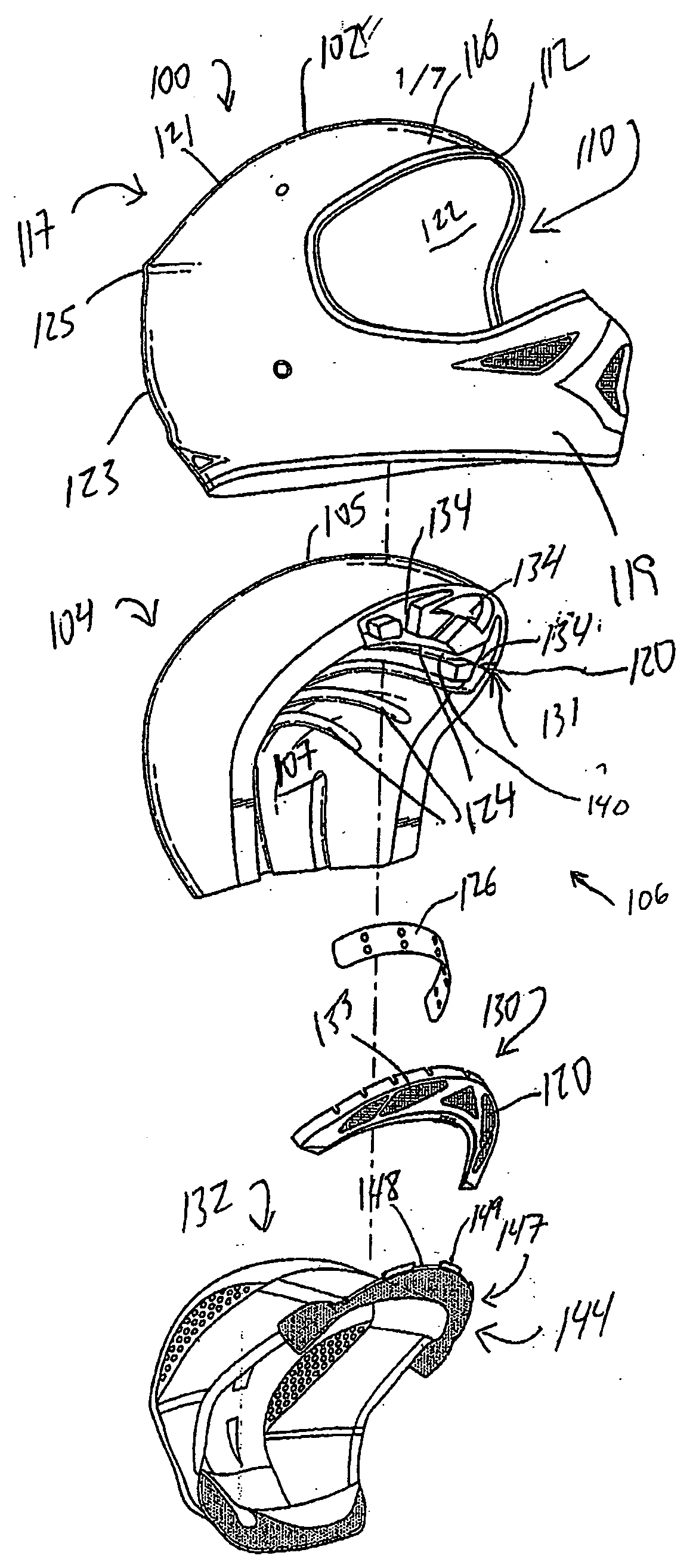Helmet
a head protection and helmet technology, applied in the field of head protection, can solve the problems of motorcycle helmets becoming very uncomfortable, motorcycle riders complaining about the heat retention properties of today's helmets, and the comfort of motorcycle helmets, so as to improve the air flow through the helmet, improve the air flow, and speed up the effect of speed
- Summary
- Abstract
- Description
- Claims
- Application Information
AI Technical Summary
Benefits of technology
Problems solved by technology
Method used
Image
Examples
Embodiment Construction
[0029] Reference will now be made to the drawings wherein like numerals refer to like parts throughout. FIG. 1 illustrates an exploded view of the disclosed helmet 100 according to one embodiment. FIG. 1 illustrates an outer protective shell 102 and an inner protective layer 104 which combine to form a head cavity 106. The outer shell 102 includes an eye opening 110, through which a user can see while wearing the helmet, an eye opening perimeter 112, and at least one exhaust opening 114, not shown in FIG. 1. The outer shell may also include a forehead member 116 located at or near the eye opening perimeter 112.
[0030] As illustrated in FIG. 1, the outer shell 102 includes a skull protection section 117 and a chin protector 119 with the eye opening 106 interposed therebetween. The chin protector 119 is integrally attached to the skull protection section 117 and extends outward therefrom in a known manner and is positioned so as to provide protection to the lower face of the user when...
PUM
 Login to View More
Login to View More Abstract
Description
Claims
Application Information
 Login to View More
Login to View More - R&D
- Intellectual Property
- Life Sciences
- Materials
- Tech Scout
- Unparalleled Data Quality
- Higher Quality Content
- 60% Fewer Hallucinations
Browse by: Latest US Patents, China's latest patents, Technical Efficacy Thesaurus, Application Domain, Technology Topic, Popular Technical Reports.
© 2025 PatSnap. All rights reserved.Legal|Privacy policy|Modern Slavery Act Transparency Statement|Sitemap|About US| Contact US: help@patsnap.com



